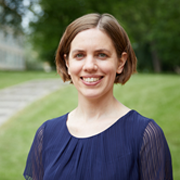
Previously: Technische Universität München, Germany
Complex organic molecules, e.g. sugars and amino acids, have been identified in interstellar space and on comets and meteorites impinging on Earth, and are believed to originate from reactions taking place at nanoscale dust grain catalysts. The latter are rather complex materials consisting of e.g. Mg- or Fe-rich silicates or aromatic hydrocarbons. To guide experimental investigations of these complex materials and reaction networks, predictive-quality simulations are needed. However, the complexity and scale of the simulations renders standard quantum mechanical methods too costly. The objective of this study is to instead apply modern machine learning- and compressed sensing-based methods in order to identify some cheap descriptive features of the dust grains that allow for predicting their reactivity under the low-temperature conditions prevalent in interstellar space. In close collaboration with experimental partners, we thereby aim to obtain a detailed understanding of the catalyst materials and reaction conditions required for the formation of complex organic molecules. This is of great fundamental interest since it could give important leads to the conditions necessary for the development of life.
I use various computational modelling and simulation tools to study catalytic reactions at solid or liquid surfaces. As such, I work at the interface between physics and chemistry, with recent machine learning and compressed sensing-based methods applied having their origin in computer science. With the AIAS fellowship I return to Aarhus University after six years as Alexander von Humboldt fellow and subsequently group leader at the Technical University of Munich.
Project title: Descriptor-based modelling of the reactivity of interstellar dust grains
Area of research: Astrophysics, chemistry, computational catalysis
Fellowship period: 1 Feb 2021 - 20 Sep 2024
Fellowship type: AIAS-COFUND II Marie Skłodowska-Curie fellow
Contact:
mie@aias.au.dk
AU Pure profile